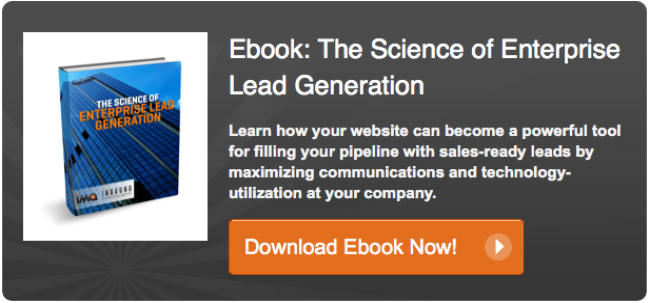 One of the biggest complaints sales departments have with inbound marketing is that the leads are too plentiful and not qualified. If your sales team has trouble keeping up with the prospects drawn in through your inbound marketing efforts, it might be time to shake things up a bit. By breaking some of the traditional sales rules, your marketing and sales teams will find harmony, your sales numbers will skyrocket, and your buyers will come back for more.
One of the biggest complaints sales departments have with inbound marketing is that the leads are too plentiful and not qualified. If your sales team has trouble keeping up with the prospects drawn in through your inbound marketing efforts, it might be time to shake things up a bit. By breaking some of the traditional sales rules, your marketing and sales teams will find harmony, your sales numbers will skyrocket, and your buyers will come back for more.
Understanding the Funnel
Before you can understand which rules to break, you must first understand how the marketing funnel fits the traditional sales cycle. If you’re familiar with the inbound funnel, then you know it already resembles a sales funnel.
The first step, or top of the funnel, is to gather as many prospects as possible with a targeted content strategy. This could come through your social media or blog, and it should appeal to anyone who might be interested in what your product could do for them.
The second step, or the middle of the funnel, is to determine which of those prospects might develop into leads. With the inbound model, that means providing more information to help the potential buyer make an informed decision.
The final step, or the bottom of the funnel, is to convert the lead into a sale. You might do this through a discount offer or a free trial.
The process allows for a lot of bending and breaking of rules, especially since it’s fluid and forming on a constant basis. When you break the rules, you can learn a lot about your customer and improve the procedures for next time.
So which traditional rules should you break or bend? Let’s take a look.
1. Address "The Fit" First
The inbound model flips the fit/pain funnel on its head. Instead of targeting buyers who fit your company’s products or services and then determining their pain points, you instead reach out to any potential buyers who might benefit from a purchase. Your content strategy should target these pain points first. From your blogs to your product descriptions, everything should tell buyers how your product or service makes their lives easier. From there, fit can then be determined.
2. Assume All Interested Parties Will Buy
Someone who downloads an ebook or “likes” your Facebook page does not automatically become a lead. The inbound marketing process is in place to funnel those prospects through the buying cycle by providing information at critical points in the decision-making process. By reaching out to every last one of your new contacts to push a sale, you’ll be labeled “annoying” and probably lose the sale.
3. Push The Sale
Instead of pushing the sale, the way a traditional salesperson might, take the time to gather more information about your potential buyers. Your best bet is through your landing pages, where prospects go to download your ebooks to learn more about your products. Discover where they work, what their job title is, and even what they do for fun. By learning this information, you can better target your marketing campaigns in the future, which then leads to even more qualified leads during the sales cycle.
4. Wait For The Sales Cycle to End
The buying cycle can take up to a year for some customers, but that’s not always the case. Rather than set your campaigns in motion and wait for the buzzer at the end, your sales team should know when to leap on a leap on a lead. By understanding the buying cycle for various buyer types, your sales team can be prepared. For instance, an enterprise-level lead probably needs to pass directly to the sales team, while a small business owner might more information to make a decision. By interrupting the cycle, your sales team can convert those “sure things” into sales immediately instead of waiting for a big pile of leads at the end of the cycle.
5. Give a Pat on The Back
In the past, the sales job may have been considered complete after a purchase was made. After all, if someone bought, the process obviously worked. Now, however, it’s important for both the sales and marketing teams to analyze the process and determine where it can be improved. The only way to do this is to pay attention to your metrics. Here is where you’ll determine who stuck with you through the entire sales process and who slipped away. For those who slipped away, you can even determine when, and that will give you the why.
Bottom Line
By breaking these traditional sales rules, your sales team will be able to qualify leads at a much faster rate. That means they won’t be bogged down with a bunch of prospects that aren’t going anywhere or buying anything. Best of all, their bending and breaking of the traditional rules is what helps you streamline the process for future sales. Because, as an inbound marketer and sales professional, your job is never done.
Patrick Owings is COO at Inbound Marketing Agents, a certified HubSpot Platinum partner agency in Nashville, TN. He co-authored the eBook The Science of Enterprise Lead Generation.
